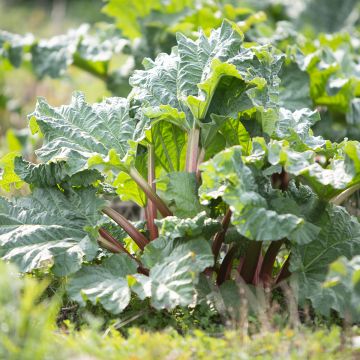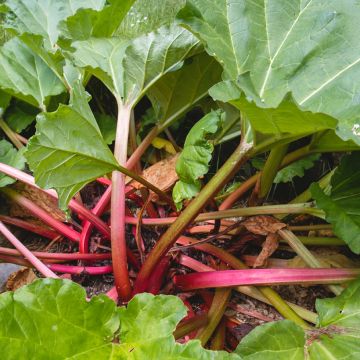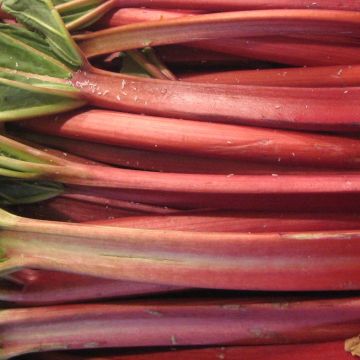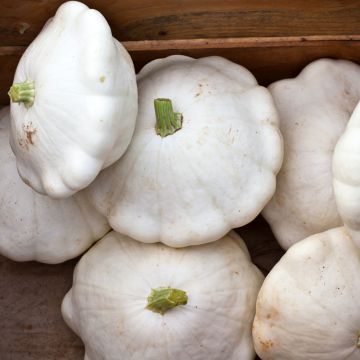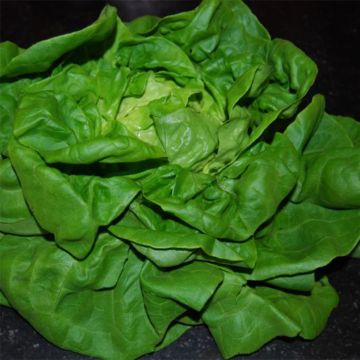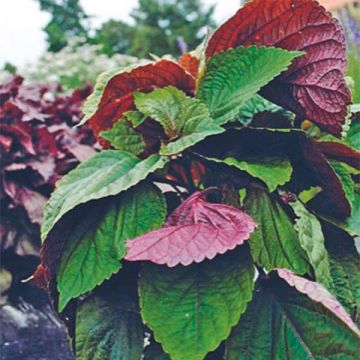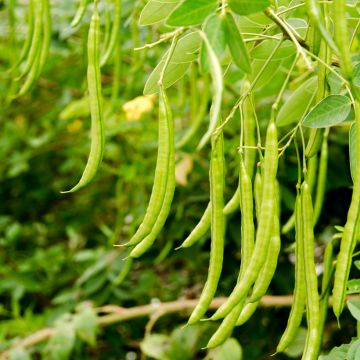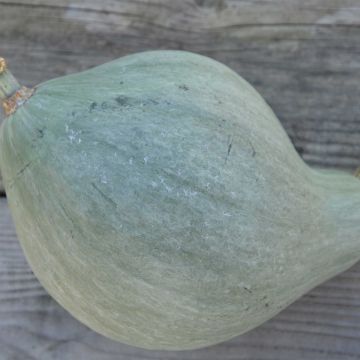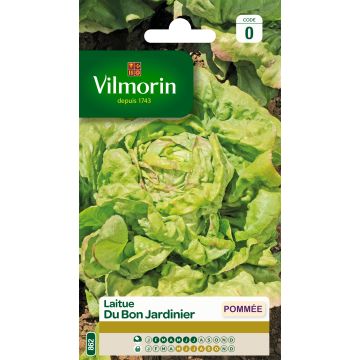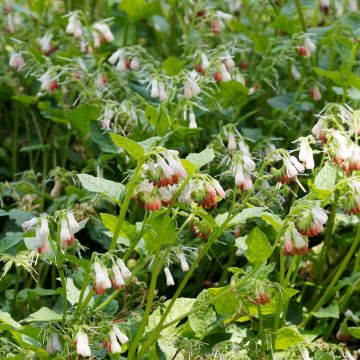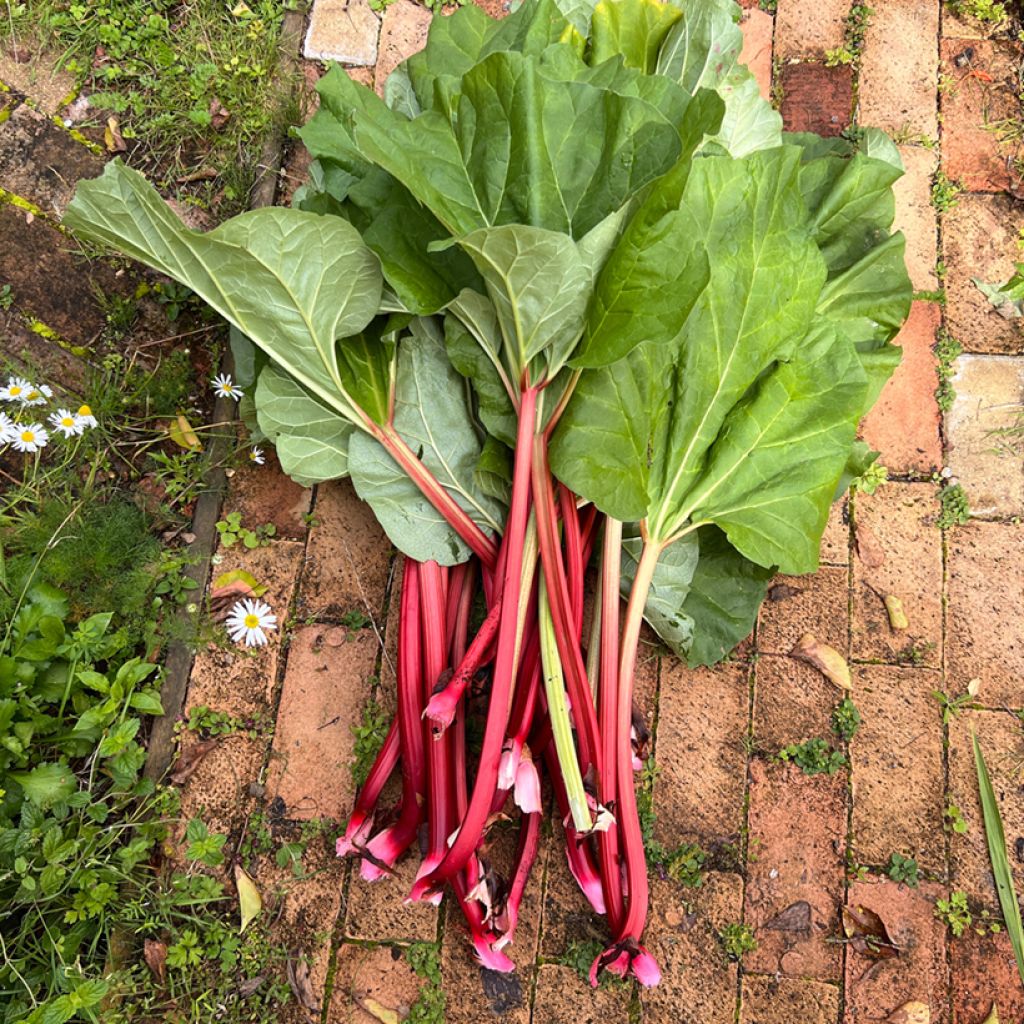

Valentine Rhubarb
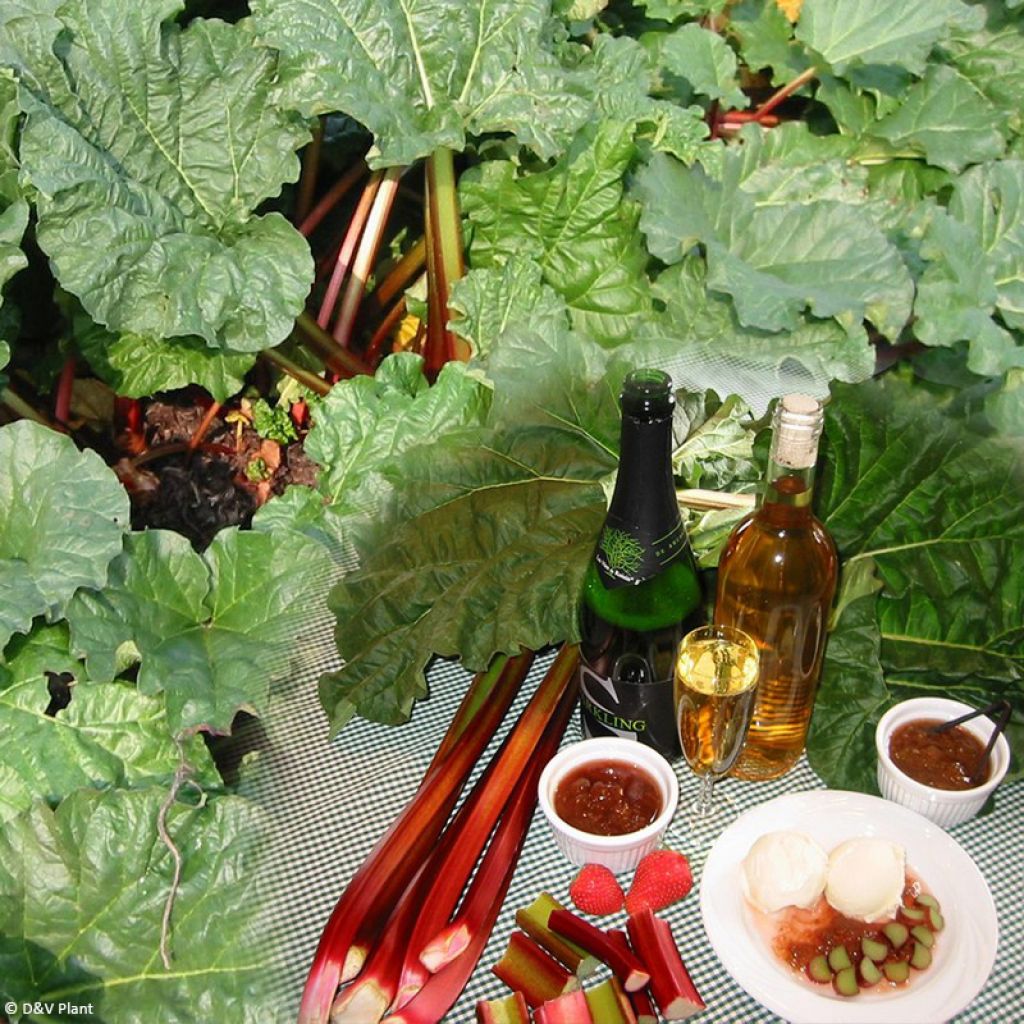

Rhubarbe Valentine
Valentine Rhubarb
Rheum x rhabarbarum Valentine
Rhubarb
The plant was jostled during transportation, it only has one small leaf left, let's hope it will recover.
gilles, 18/04/2023
This plant carries a 6 months recovery warranty
More information
We guarantee the quality of our plants for a full growing cycle, and will replace at our expense any plant that fails to recover under normal climatic and planting conditions.
From €5.90 for pickup delivery and €6.90 for home delivery
Express home delivery from €8.90.
Description
The Valentine Rhubarb (Rheum x hybridum) is a late, low-yielding variety of Garden Rhubarb that develops thin and beautiful ruby red stalks. Their flesh, also red in colour, is very low in acidity, ideal for making brightly coloured juices. It also retains a good pink colour when cooked. Although it is not very productive, Valentine has the advantage of flowering less and better tolerating heat and water shortage than most rhubarb varieties. It is a vigorous perennial plant, very hardy, highly ornamental, and easy to grow in a fertile garden soil that is deep and not too dry in summer.
Originally from Asia, Garden Rhubarb is part of the Polygonaceae family. Used as a medicinal plant since ancient times, it has only been consumed as food since the 18th century. It was Marco Polo who introduced it to Europe.
Rhubarb is a vigorous plant that produces large leaves, the petioles of which are generally green tinged with red and are consumed. Its flowering is far from systematic. It occurs in June, in the form of panicles of white flowers. It is rather ornamental, but it reduces leaf production and tends to weaken the plant. It is therefore advisable to remove the flower stalks before they develop.
In the garden, it thrives best in moist, fertile soil and cool climates. You should plant it in full sun or partial shade, making sure to leave enough space for its development, at least 1 m², or even 1.5 m².
The Valentine Rhubarb season begins in June and can produce a second harvest in late summer or early autumn. The sweet flavor of its stalks is particularly suitable for making juice. In cooking, rhubarb stalks are usually consumed cooked in jam, compote, marmalade, or as pie filling. Some also eat them raw, simply dipped in sugar and eaten as is. Its deliciously sweet-tart flavor pairs particularly well with strawberries. Try this combination in a crumble or jam, it's a delight! Rhubarb compote can also be used to accompany savory dishes, especially white meats.
Rhubarb has appetizing, astringent, and refreshing properties, and contains vitamins (B, C) and minerals (calcium, magnesium, iron). But be careful, its leaves, which are terribly rich in oxalic acid, are toxic.
Harvest: from the 2nd or 3rd year. The stalks are mainly harvested in May-June, but also later in the season, depending on the varieties.
Storage: Rhubarb stalks can be stored for a few days in the vegetable drawer of the refrigerator or for a few months, cut into pieces, in the freezer.
Gardener's tip: Rhubarb leaves are toxic, but they can be used to prepare a repellent liquid against aphids.
Report an error about the product description
Harvest
Plant habit
Foliage
Other Rhubarb
Planting and care
It is in deep, moist, fertile soil and in a humid (even cold) climate that Valentine Rhubarb thrives best. Therefore, you will plant it in rich or previously enriched soil (3 to 4 kg of compost per m²), in the sun or partial shade, making sure to leave enough space for its development, at least 1 m², or even 1.5 m².
Planting is done in the spring in cooler regions (from March to June) and in the autumn for mild climates, from September to November. Loosen the soil deeply and add well-rotted compost. The plants should be spaced 1 m (3ft) apart in rows and 1.50 m (5ft) between rows. Dig a hole (3 times the volume of the root ball), place the root ball and cover with soil. Firmly tamp down and water thoroughly.
Remove the flower stalks before they develop to encourage leaf growth. During cultivation, water regularly, especially in hot weather. Apply a mulch at the base to keep it cool in summer. Regularly hoe and weed.
Rhubarb is generous, but it is also greedy: an annual compost application is highly recommended.
Cultivation
Care
Intended location
-
, onOrder confirmed
Reply from on Promesse de fleurs
Old and forgotten vegetables
Haven't found what you were looking for?
Hardiness is the lowest winter temperature a plant can endure without suffering serious damage or even dying. However, hardiness is affected by location (a sheltered area, such as a patio), protection (winter cover) and soil type (hardiness is improved by well-drained soil).

Photo Sharing Terms & Conditions
In order to encourage gardeners to interact and share their experiences, Promesse de fleurs offers various media enabling content to be uploaded onto its Site - in particular via the ‘Photo sharing’ module.
The User agrees to refrain from:
- Posting any content that is illegal, prejudicial, insulting, racist, inciteful to hatred, revisionist, contrary to public decency, that infringes on privacy or on the privacy rights of third parties, in particular the publicity rights of persons and goods, intellectual property rights, or the right to privacy.
- Submitting content on behalf of a third party;
- Impersonate the identity of a third party and/or publish any personal information about a third party;
In general, the User undertakes to refrain from any unethical behaviour.
All Content (in particular text, comments, files, images, photos, videos, creative works, etc.), which may be subject to property or intellectual property rights, image or other private rights, shall remain the property of the User, subject to the limited rights granted by the terms of the licence granted by Promesse de fleurs as stated below. Users are at liberty to publish or not to publish such Content on the Site, notably via the ‘Photo Sharing’ facility, and accept that this Content shall be made public and freely accessible, notably on the Internet.
Users further acknowledge, undertake to have ,and guarantee that they hold all necessary rights and permissions to publish such material on the Site, in particular with regard to the legislation in force pertaining to any privacy, property, intellectual property, image, or contractual rights, or rights of any other nature. By publishing such Content on the Site, Users acknowledge accepting full liability as publishers of the Content within the meaning of the law, and grant Promesse de fleurs, free of charge, an inclusive, worldwide licence for the said Content for the entire duration of its publication, including all reproduction, representation, up/downloading, displaying, performing, transmission, and storage rights.
Users also grant permission for their name to be linked to the Content and accept that this link may not always be made available.
By engaging in posting material, Users consent to their Content becoming automatically accessible on the Internet, in particular on other sites and/or blogs and/or web pages of the Promesse de fleurs site, including in particular social pages and the Promesse de fleurs catalogue.
Users may secure the removal of entrusted content free of charge by issuing a simple request via our contact form.
The flowering period indicated on our website applies to countries and regions located in USDA zone 8 (France, the United Kingdom, Ireland, the Netherlands, etc.)
It will vary according to where you live:
- In zones 9 to 10 (Italy, Spain, Greece, etc.), flowering will occur about 2 to 4 weeks earlier.
- In zones 6 to 7 (Germany, Poland, Slovenia, and lower mountainous regions), flowering will be delayed by 2 to 3 weeks.
- In zone 5 (Central Europe, Scandinavia), blooming will be delayed by 3 to 5 weeks.
In temperate climates, pruning of spring-flowering shrubs (forsythia, spireas, etc.) should be done just after flowering.
Pruning of summer-flowering shrubs (Indian Lilac, Perovskia, etc.) can be done in winter or spring.
In cold regions as well as with frost-sensitive plants, avoid pruning too early when severe frosts may still occur.
The planting period indicated on our website applies to countries and regions located in USDA zone 8 (France, United Kingdom, Ireland, Netherlands).
It will vary according to where you live:
- In Mediterranean zones (Marseille, Madrid, Milan, etc.), autumn and winter are the best planting periods.
- In continental zones (Strasbourg, Munich, Vienna, etc.), delay planting by 2 to 3 weeks in spring and bring it forward by 2 to 4 weeks in autumn.
- In mountainous regions (the Alps, Pyrenees, Carpathians, etc.), it is best to plant in late spring (May-June) or late summer (August-September).
The harvesting period indicated on our website applies to countries and regions in USDA zone 8 (France, England, Ireland, the Netherlands).
In colder areas (Scandinavia, Poland, Austria...) fruit and vegetable harvests are likely to be delayed by 3-4 weeks.
In warmer areas (Italy, Spain, Greece, etc.), harvesting will probably take place earlier, depending on weather conditions.
The sowing periods indicated on our website apply to countries and regions within USDA Zone 8 (France, UK, Ireland, Netherlands).
In colder areas (Scandinavia, Poland, Austria...), delay any outdoor sowing by 3-4 weeks, or sow under glass.
In warmer climes (Italy, Spain, Greece, etc.), bring outdoor sowing forward by a few weeks.

































